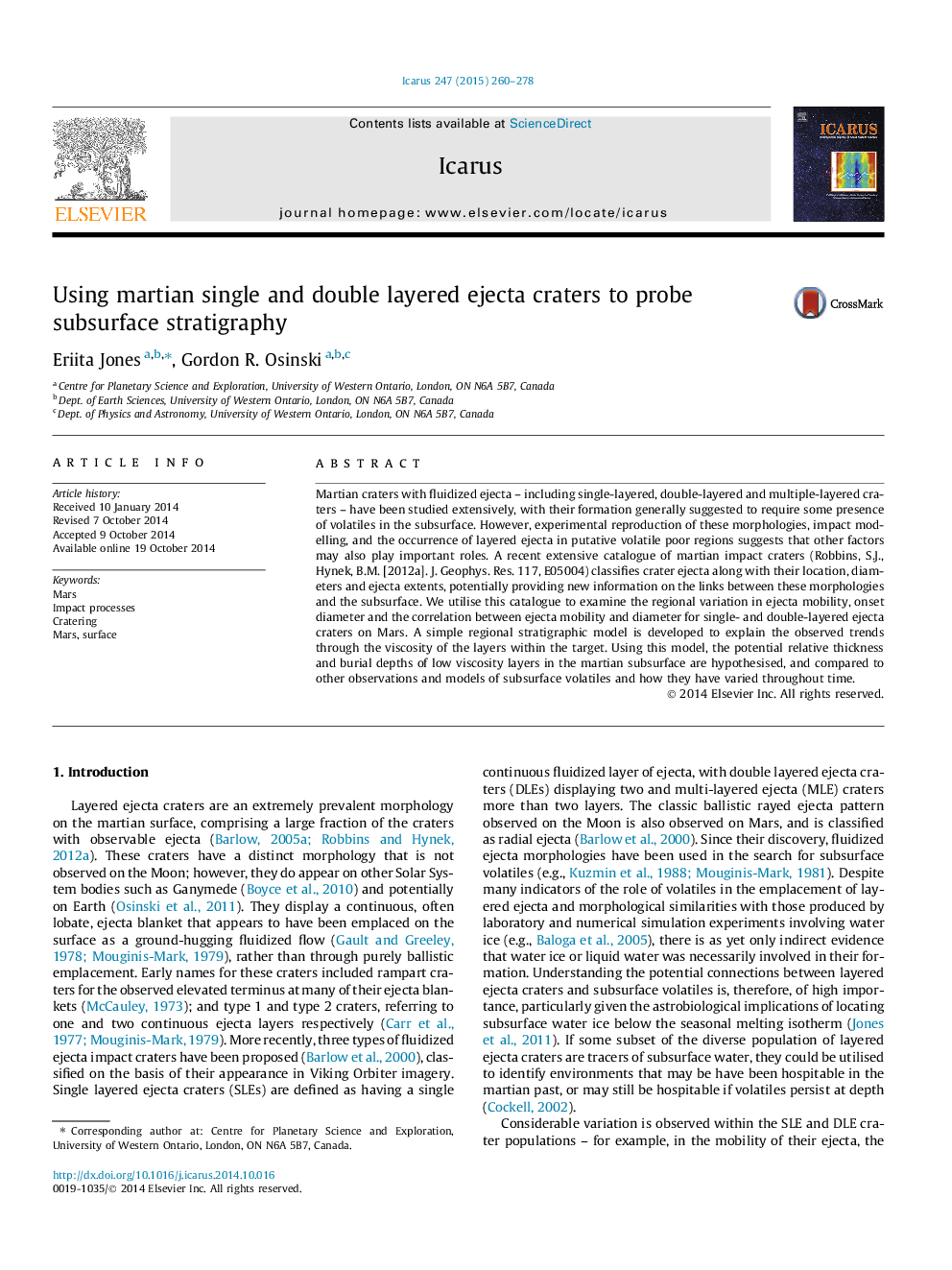| Article ID | Journal | Published Year | Pages | File Type |
|---|---|---|---|---|
| 8137100 | Icarus | 2015 | 19 Pages |
Abstract
Martian craters with fluidized ejecta - including single-layered, double-layered and multiple-layered craters - have been studied extensively, with their formation generally suggested to require some presence of volatiles in the subsurface. However, experimental reproduction of these morphologies, impact modelling, and the occurrence of layered ejecta in putative volatile poor regions suggests that other factors may also play important roles. A recent extensive catalogue of martian impact craters (Robbins, S.J., Hynek, B.M. [2012a]. J. Geophys. Res. 117, E05004) classifies crater ejecta along with their location, diameters and ejecta extents, potentially providing new information on the links between these morphologies and the subsurface. We utilise this catalogue to examine the regional variation in ejecta mobility, onset diameter and the correlation between ejecta mobility and diameter for single- and double-layered ejecta craters on Mars. A simple regional stratigraphic model is developed to explain the observed trends through the viscosity of the layers within the target. Using this model, the potential relative thickness and burial depths of low viscosity layers in the martian subsurface are hypothesised, and compared to other observations and models of subsurface volatiles and how they have varied throughout time.
Related Topics
Physical Sciences and Engineering
Earth and Planetary Sciences
Space and Planetary Science
Authors
Eriita Jones, Gordon R. Osinski,
